Ana-Maria Bucur
A Survey on Multilingual Mental Disorders Detection from Social Media Data
May 21, 2025Abstract:The increasing prevalence of mental health disorders globally highlights the urgent need for effective digital screening methods that can be used in multilingual contexts. Most existing studies, however, focus on English data, overlooking critical mental health signals that may be present in non-English texts. To address this important gap, we present the first survey on the detection of mental health disorders using multilingual social media data. We investigate the cultural nuances that influence online language patterns and self-disclosure behaviors, and how these factors can impact the performance of NLP tools. Additionally, we provide a comprehensive list of multilingual data collections that can be used for developing NLP models for mental health screening. Our findings can inform the design of effective multilingual mental health screening tools that can meet the needs of diverse populations, ultimately improving mental health outcomes on a global scale.
Datasets for Depression Modeling in Social Media: An Overview
Mar 27, 2025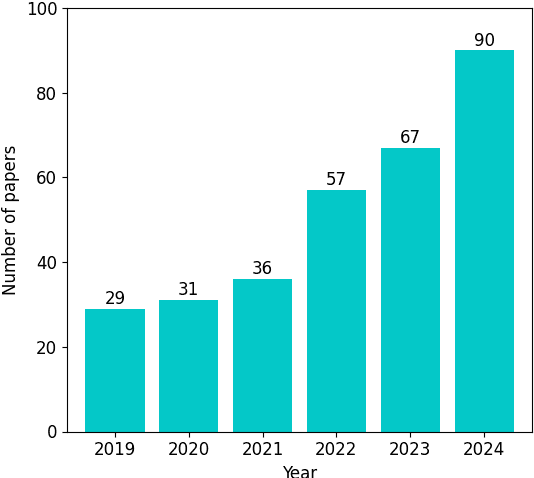
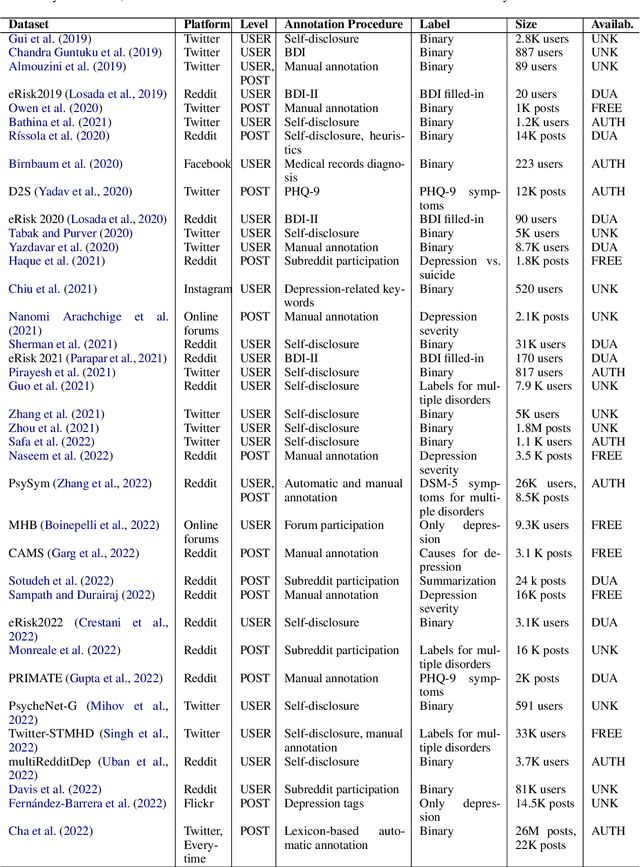
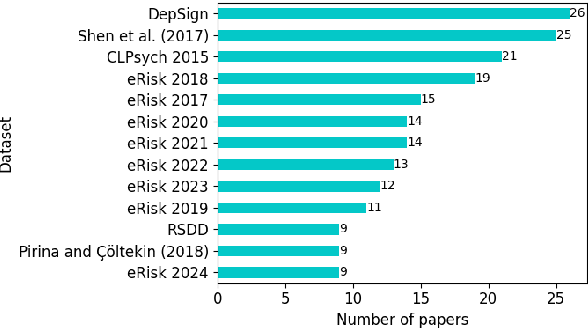
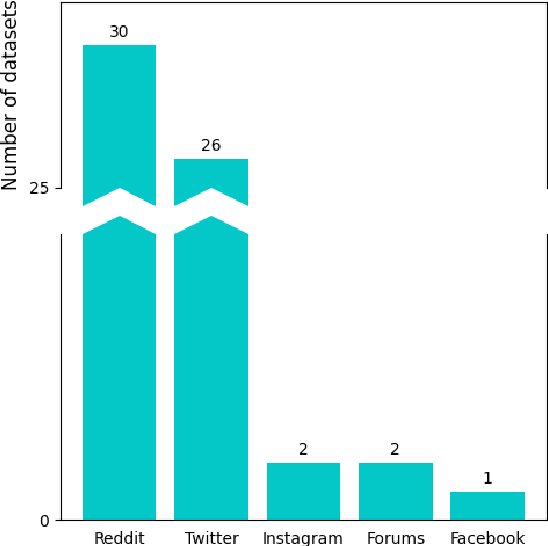
Abstract:Depression is the most common mental health disorder, and its prevalence increased during the COVID-19 pandemic. As one of the most extensively researched psychological conditions, recent research has increasingly focused on leveraging social media data to enhance traditional methods of depression screening. This paper addresses the growing interest in interdisciplinary research on depression, and aims to support early-career researchers by providing a comprehensive and up-to-date list of datasets for analyzing and predicting depression through social media data. We present an overview of datasets published between 2019 and 2024. We also make the comprehensive list of datasets available online as a continuously updated resource, with the hope that it will facilitate further interdisciplinary research into the linguistic expressions of depression on social media.
BRIGHTER: BRIdging the Gap in Human-Annotated Textual Emotion Recognition Datasets for 28 Languages
Feb 17, 2025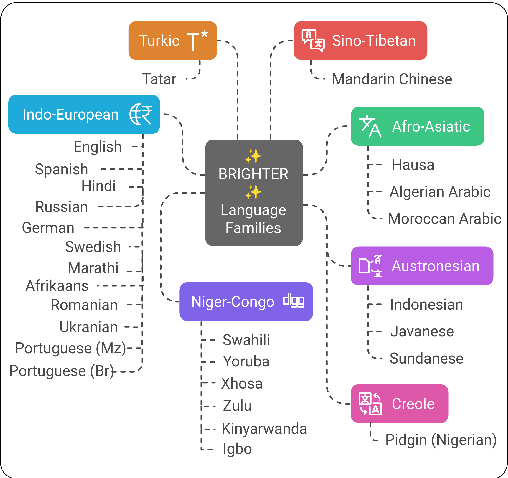
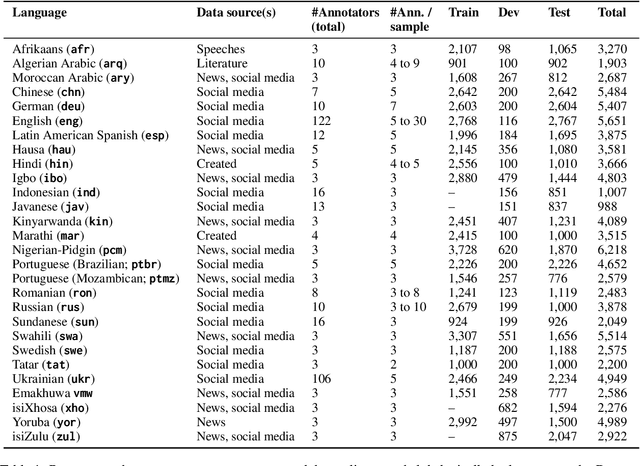
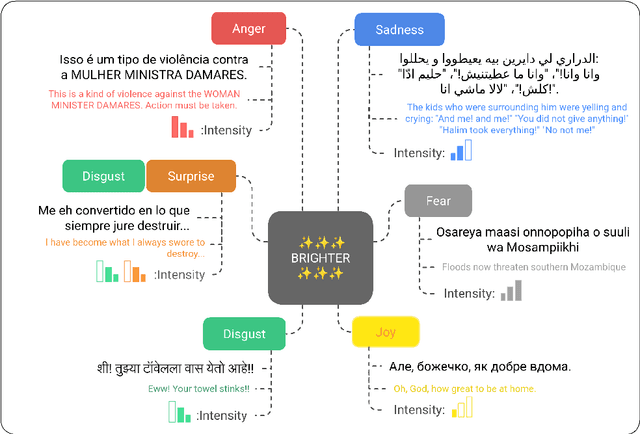
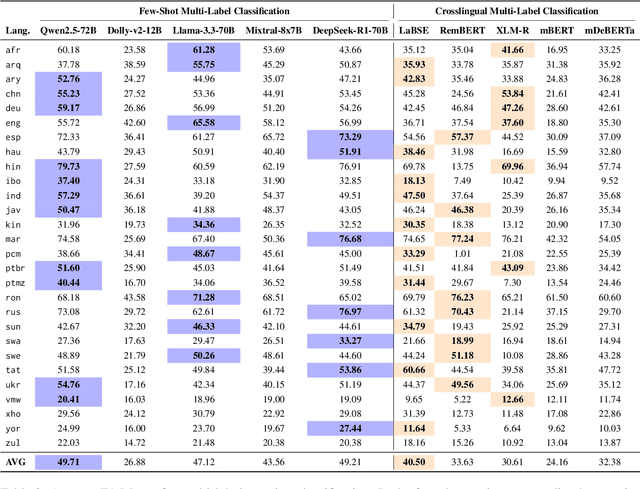
Abstract:People worldwide use language in subtle and complex ways to express emotions. While emotion recognition -- an umbrella term for several NLP tasks -- significantly impacts different applications in NLP and other fields, most work in the area is focused on high-resource languages. Therefore, this has led to major disparities in research and proposed solutions, especially for low-resource languages that suffer from the lack of high-quality datasets. In this paper, we present BRIGHTER-- a collection of multilabeled emotion-annotated datasets in 28 different languages. BRIGHTER covers predominantly low-resource languages from Africa, Asia, Eastern Europe, and Latin America, with instances from various domains annotated by fluent speakers. We describe the data collection and annotation processes and the challenges of building these datasets. Then, we report different experimental results for monolingual and crosslingual multi-label emotion identification, as well as intensity-level emotion recognition. We investigate results with and without using LLMs and analyse the large variability in performance across languages and text domains. We show that BRIGHTER datasets are a step towards bridging the gap in text-based emotion recognition and discuss their impact and utility.
On the State of NLP Approaches to Modeling Depression in Social Media: A Post-COVID-19 Outlook
Oct 11, 2024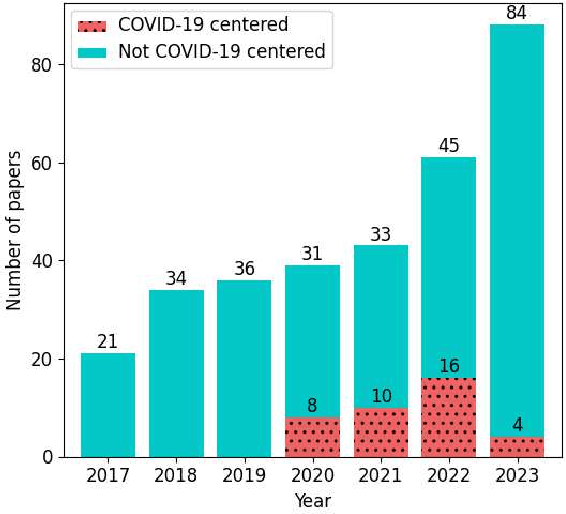
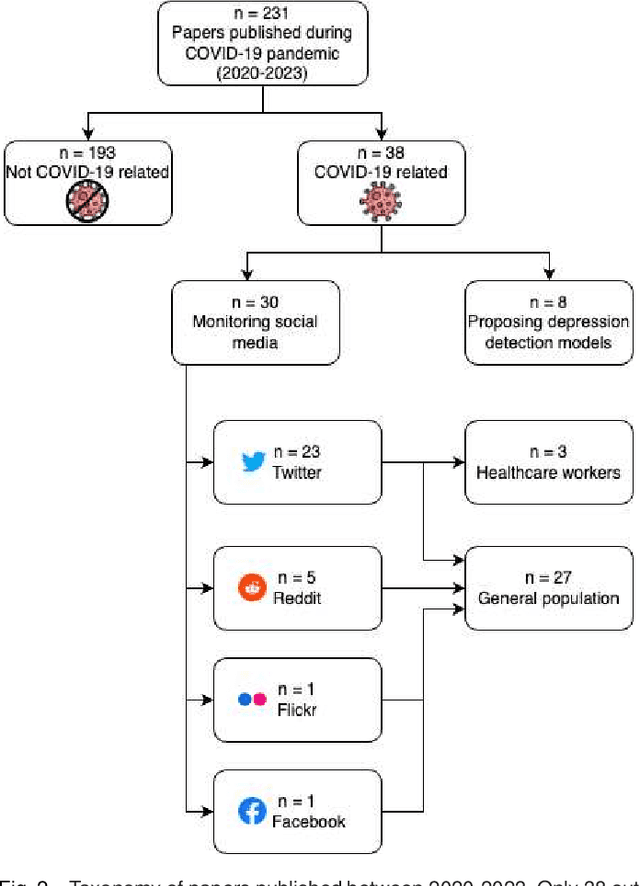
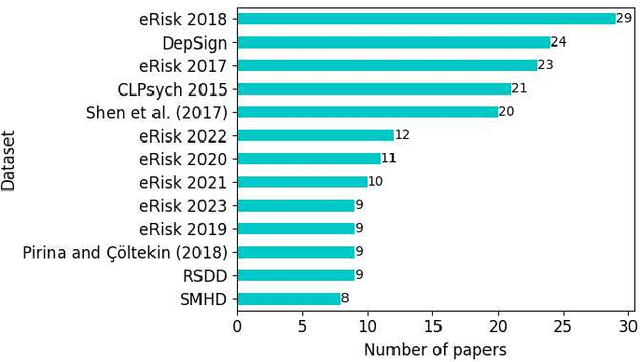
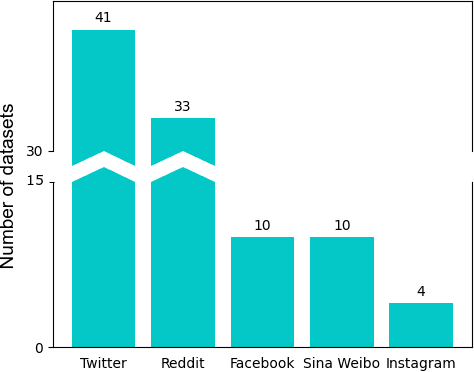
Abstract:Computational approaches to predicting mental health conditions in social media have been substantially explored in the past years. Multiple surveys have been published on this topic, providing the community with comprehensive accounts of the research in this area. Among all mental health conditions, depression is the most widely studied due to its worldwide prevalence. The COVID-19 global pandemic, starting in early 2020, has had a great impact on mental health worldwide. Harsh measures employed by governments to slow the spread of the virus (e.g., lockdowns) and the subsequent economic downturn experienced in many countries have significantly impacted people's lives and mental health. Studies have shown a substantial increase of above 50% in the rate of depression in the population. In this context, we present a survey on natural language processing (NLP) approaches to modeling depression in social media, providing the reader with a post-COVID-19 outlook. This survey contributes to the understanding of the impacts of the pandemic on modeling depression in social media. We outline how state-of-the-art approaches and new datasets have been used in the context of the COVID-19 pandemic. Finally, we also discuss ethical issues in collecting and processing mental health data, considering fairness, accountability, and ethics.
RoMath: A Mathematical Reasoning Benchmark in Romanian
Sep 17, 2024



Abstract:Mathematics has long been conveyed through natural language, primarily for human understanding. With the rise of mechanized mathematics and proof assistants, there is a growing need to understand informal mathematical text, yet most existing benchmarks focus solely on English, overlooking other languages. This paper introduces RoMath, a Romanian mathematical reasoning benchmark suite comprising three datasets: RoMath-Baccalaureate, RoMath-Competitions and RoMath-Synthetic, which cover a range of mathematical domains and difficulty levels, aiming to improve non-English language models and promote multilingual AI development. By focusing on Romanian, a low-resource language with unique linguistic features, RoMath addresses the limitations of Anglo-centric models and emphasizes the need for dedicated resources beyond simple automatic translation. We benchmark several open-weight language models, highlighting the importance of creating resources for underrepresented languages. We make the code and dataset available.
Reading Between the Frames: Multi-Modal Depression Detection in Videos from Non-Verbal Cues
Jan 05, 2024
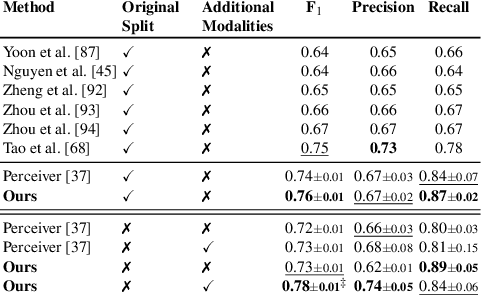


Abstract:Depression, a prominent contributor to global disability, affects a substantial portion of the population. Efforts to detect depression from social media texts have been prevalent, yet only a few works explored depression detection from user-generated video content. In this work, we address this research gap by proposing a simple and flexible multi-modal temporal model capable of discerning non-verbal depression cues from diverse modalities in noisy, real-world videos. We show that, for in-the-wild videos, using additional high-level non-verbal cues is crucial to achieving good performance, and we extracted and processed audio speech embeddings, face emotion embeddings, face, body and hand landmarks, and gaze and blinking information. Through extensive experiments, we show that our model achieves state-of-the-art results on three key benchmark datasets for depression detection from video by a substantial margin. Our code is publicly available on GitHub.
Automatic Extraction of the Romanian Academic Word List: Data and Methods
Jul 29, 2023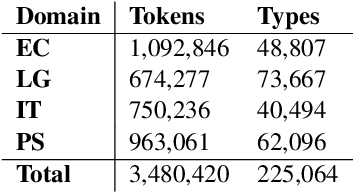
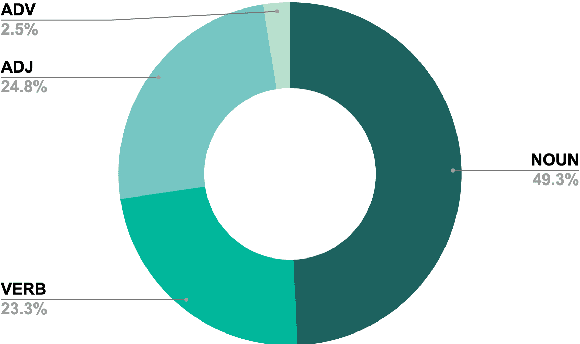
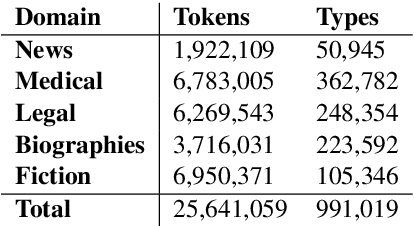

Abstract:This paper presents the methodology and data used for the automatic extraction of the Romanian Academic Word List (Ro-AWL). Academic Word Lists are useful in both L2 and L1 teaching contexts. For the Romanian language, no such resource exists so far. Ro-AWL has been generated by combining methods from corpus and computational linguistics with L2 academic writing approaches. We use two types of data: (a) existing data, such as the Romanian Frequency List based on the ROMBAC corpus, and (b) self-compiled data, such as the expert academic writing corpus EXPRES. For constructing the academic word list, we follow the methodology for building the Academic Vocabulary List for the English language. The distribution of Ro-AWL features (general distribution, POS distribution) into four disciplinary datasets is in line with previous research. Ro-AWL is freely available and can be used for teaching, research and NLP applications.
Utilizing ChatGPT Generated Data to Retrieve Depression Symptoms from Social Media
Jul 06, 2023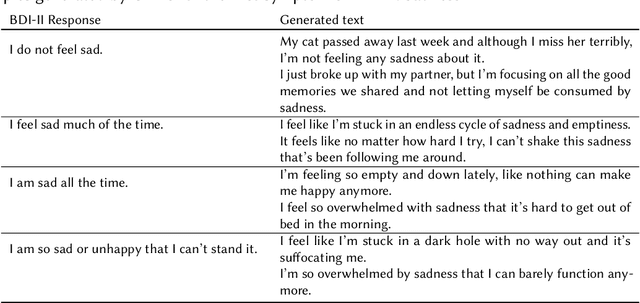


Abstract:In this work, we present the contribution of the BLUE team in the eRisk Lab task on searching for symptoms of depression. The task consists of retrieving and ranking Reddit social media sentences that convey symptoms of depression from the BDI-II questionnaire. Given that synthetic data provided by LLMs have been proven to be a reliable method for augmenting data and fine-tuning downstream models, we chose to generate synthetic data using ChatGPT for each of the symptoms of the BDI-II questionnaire. We designed a prompt such that the generated data contains more richness and semantic diversity than the BDI-II responses for each question and, at the same time, contains emotional and anecdotal experiences that are specific to the more intimate way of sharing experiences on Reddit. We perform semantic search and rank the sentences' relevance to the BDI-II symptoms by cosine similarity. We used two state-of-the-art transformer-based models (MentalRoBERTa and a variant of MPNet) for embedding the social media posts, the original and generated responses of the BDI-II. Our results show that using sentence embeddings from a model designed for semantic search outperforms the approach using embeddings from a model pre-trained on mental health data. Furthermore, the generated synthetic data were proved too specific for this task, the approach simply relying on the BDI-II responses had the best performance.
It's Just a Matter of Time: Detecting Depression with Time-Enriched Multimodal Transformers
Jan 13, 2023Abstract:Depression detection from user-generated content on the internet has been a long-lasting topic of interest in the research community, providing valuable screening tools for psychologists. The ubiquitous use of social media platforms lays out the perfect avenue for exploring mental health manifestations in posts and interactions with other users. Current methods for depression detection from social media mainly focus on text processing, and only a few also utilize images posted by users. In this work, we propose a flexible time-enriched multimodal transformer architecture for detecting depression from social media posts, using pretrained models for extracting image and text embeddings. Our model operates directly at the user-level, and we enrich it with the relative time between posts by using time2vec positional embeddings. Moreover, we propose another model variant, which can operate on randomly sampled and unordered sets of posts to be more robust to dataset noise. We show that our method, using EmoBERTa and CLIP embeddings, surpasses other methods on two multimodal datasets, obtaining state-of-the-art results of 0.931 F1 score on a popular multimodal Twitter dataset, and 0.902 F1 score on the only multimodal Reddit dataset.
An End-to-End Set Transformer for User-Level Classification of Depression and Gambling Disorder
Jul 02, 2022



Abstract:This work proposes a transformer architecture for user-level classification of gambling addiction and depression that is trainable end-to-end. As opposed to other methods that operate at the post level, we process a set of social media posts from a particular individual, to make use of the interactions between posts and eliminate label noise at the post level. We exploit the fact that, by not injecting positional encodings, multi-head attention is permutation invariant and we process randomly sampled sets of texts from a user after being encoded with a modern pretrained sentence encoder (RoBERTa / MiniLM). Moreover, our architecture is interpretable with modern feature attribution methods and allows for automatic dataset creation by identifying discriminating posts in a user's text-set. We perform ablation studies on hyper-parameters and evaluate our method for the eRisk 2022 Lab on early detection of signs of pathological gambling and early risk detection of depression. The method proposed by our team BLUE obtained the best ERDE5 score of 0.015, and the second-best ERDE50 score of 0.009 for pathological gambling detection. For the early detection of depression, we obtained the second-best ERDE50 of 0.027.
 Add to Chrome
Add to Chrome Add to Firefox
Add to Firefox Add to Edge
Add to Edge